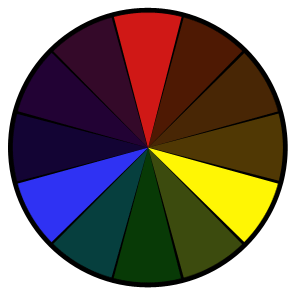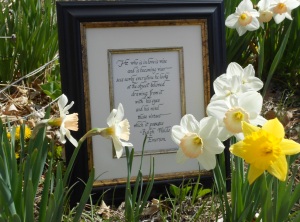Choosing the colors for your wedding can be an arduous process for many brides. For those who shy away from color for fear of being gaudy, follow my lead!
A color wheel and some color theory basics are all the tools a girl needs for an unforgettable wedding color scheme. This tried and true method used by graphic artists and web developers won’t steer you wrong. To avoid appearing like a first grade classroom silver, gold, bronze, black and/or white/ivory may be added for depth.
Also remember to mix the use of each color. You might use the same color for both bridesmaids dresses and the bows on your invitations.
While it is fine to have up to four colors, ensure that you use them wisely. Pick two colors as the dominant theme of your wedding ceremony and reception, tend use the other two as accent colors.
A great example of a four-color palette in action are rustic weddings. A bold bride could carry a bouquet of wildflowers in red-orange, yellow-orange, blue-purple and blue-green. Her attendants could wear blue-purple dresses with yellow-orange sashes that match the grooms’ tie. Her invitations could be on blue-purple cardstock layered with yellow paper written in black ink and so forth and so forth ad nauseam…
Complementary Color Combination – A two color scheme using colors from opposite sides of color wheel. Simplicity at its finest! You can easily dress it up by adding silver, gold, bronze, black or white.
Triad Color Combination – Just as it sounds, it is a three color scheme. Colors are picked by drawing a wide triangle on color wheel. Each color is one-third of the way around the wheel.
Split complementary Combination – This scheme consists of three colors and literally combines both complimentary and triad combinations. Again, colors will be in a triangular pattern.
Double Complimentary Combination – A four-color scheme. Arrived by the same means as “Complementary Combination” above. Simply choose another complimentary color set that enhances the ones you’ve chosen. Colors will usually make an X pattern on color wheel.
Please visit the following website for more information on color and color theory. Thanks to both of these ladies for all of your help!
http://creativecurio.com/2008/05/the-color-wheel-and-color-theory/
Visit this website to download your own color wheel.





